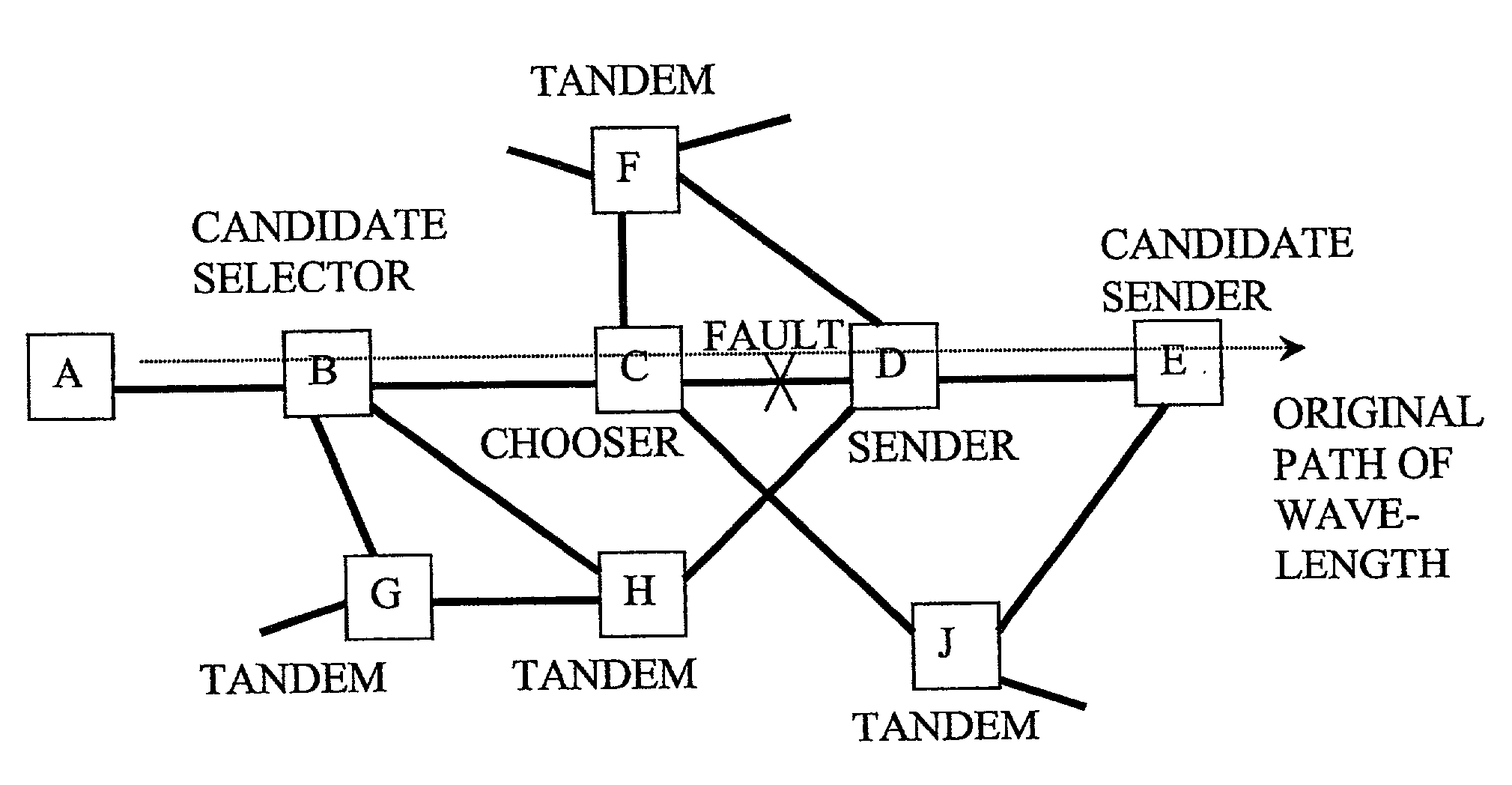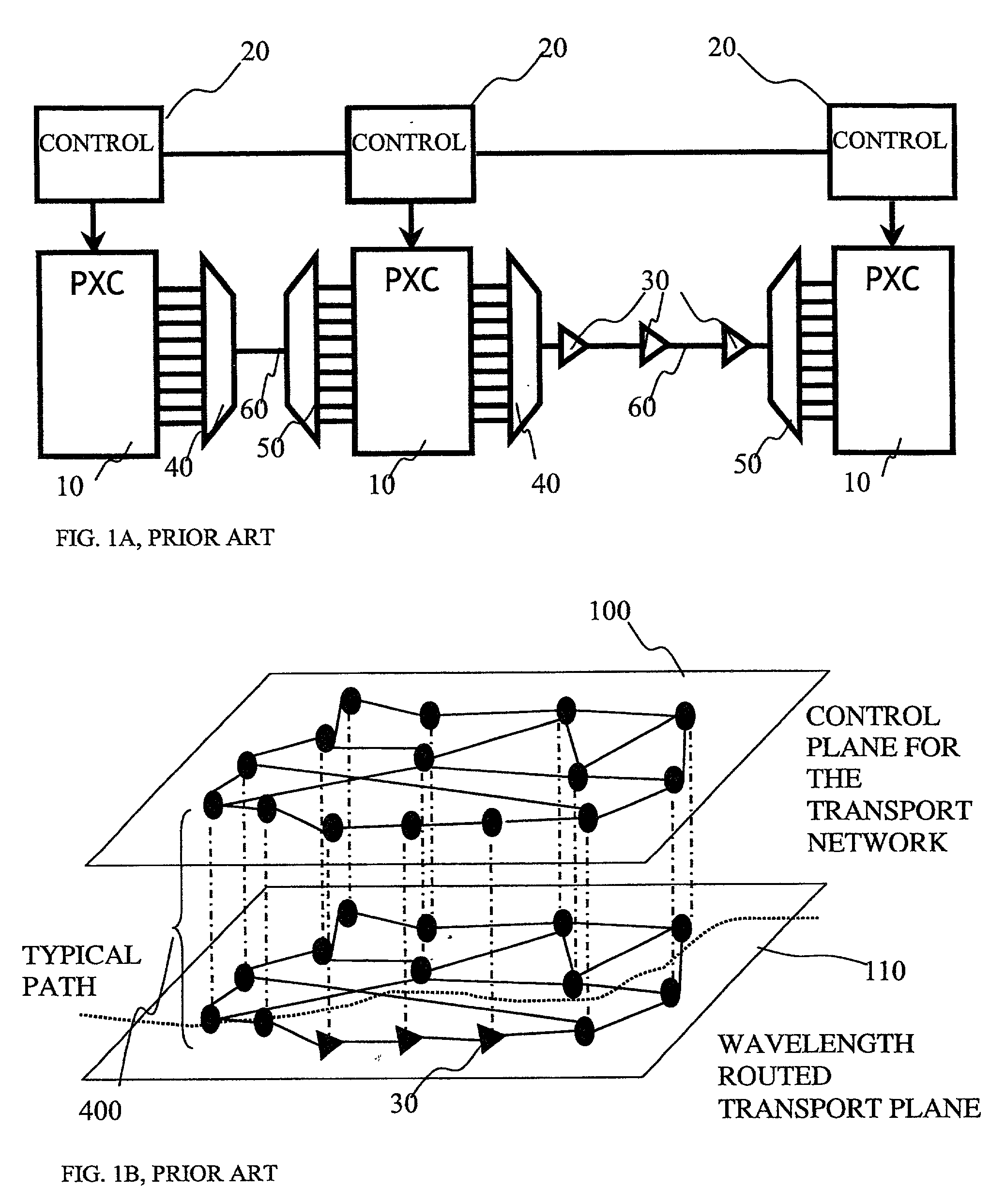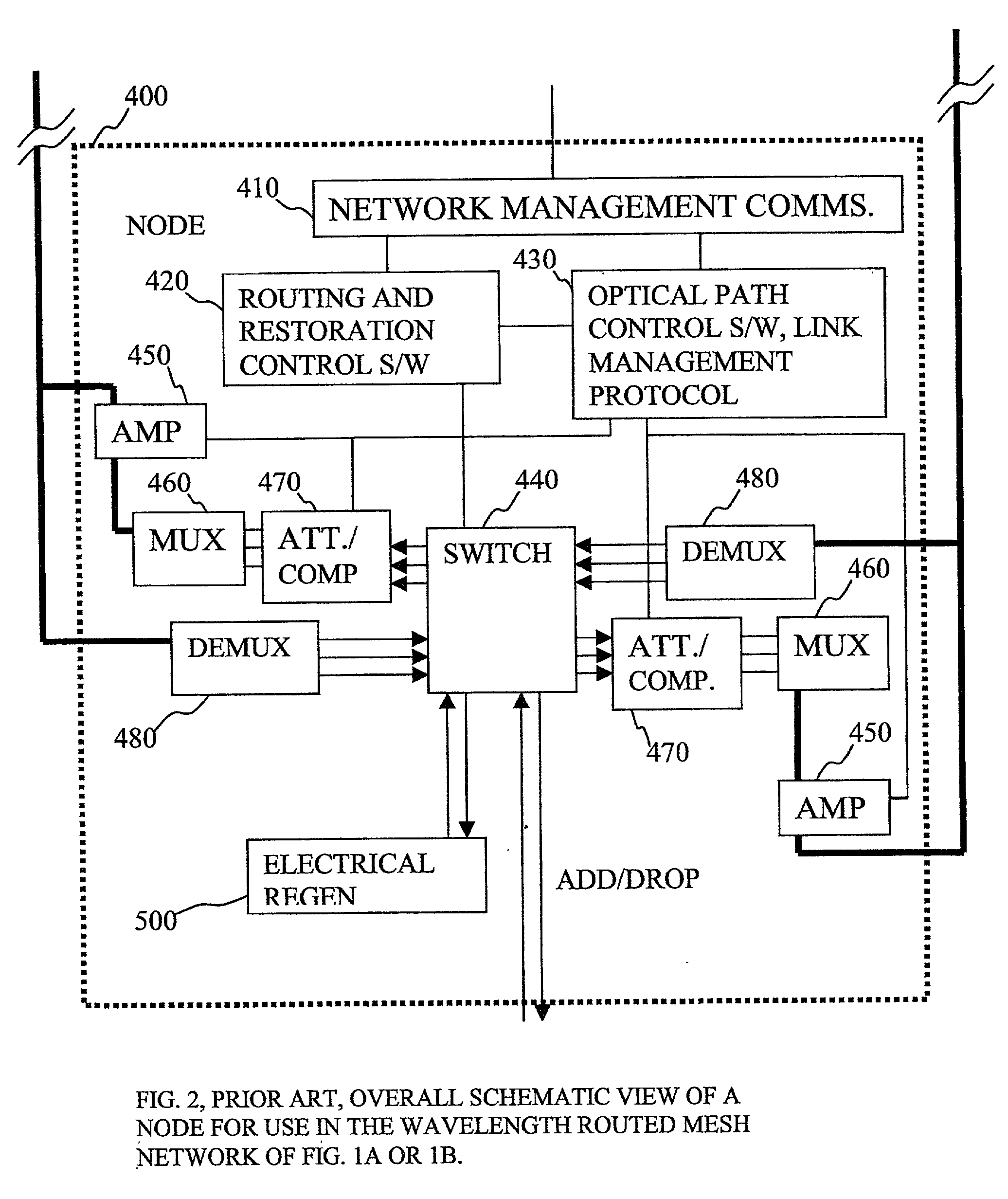Fast restoration in optical mesh network
a fast restoration and optical mesh technology, applied in transmission monitoring/testing/fault-measurement systems, transmission, fault recovery arrangements, etc., can solve the problems of large overhead message traffic, delay in restoration, traffic congestion of control data communication channels, etc., and achieve greater scalability and faster operation
- Summary
- Abstract
- Description
- Claims
- Application Information
AI Technical Summary
Benefits of technology
Problems solved by technology
Method used
Image
Examples
Embodiment Construction
[0044] By way of introduction to the examples of how to implement the above mentioned features, first of all, a typical network will be described briefly. FIG. 1 shows in schematic form, a type of network, in which embodiments of the present invention may be applied. Part of such a network is shown in FIG. 1A.
FIGS. 1A, 1B, Wavelength Routed Optical Network.
[0045] FIG. 1A shows some of the principal elements in schematic form of a conventional wavelength routed optical network. Photonic cross connects (PXC) 10 are located at many or each of the nodes of the network. Three are shown, though in practice there may be a mesh of tens or hundreds of nodes inter-connected in a mesh, depending on required traffic characteristics. The cross-connects may be implemented using electronic switching, or optical switching, or a mixture. Wavelengths, or bands of wavelengths, or groups of wavelengths may be switched between different links in the network to enable them to reach their desired destinat...
PUM
 Login to View More
Login to View More Abstract
Description
Claims
Application Information
 Login to View More
Login to View More - R&D
- Intellectual Property
- Life Sciences
- Materials
- Tech Scout
- Unparalleled Data Quality
- Higher Quality Content
- 60% Fewer Hallucinations
Browse by: Latest US Patents, China's latest patents, Technical Efficacy Thesaurus, Application Domain, Technology Topic, Popular Technical Reports.
© 2025 PatSnap. All rights reserved.Legal|Privacy policy|Modern Slavery Act Transparency Statement|Sitemap|About US| Contact US: help@patsnap.com



